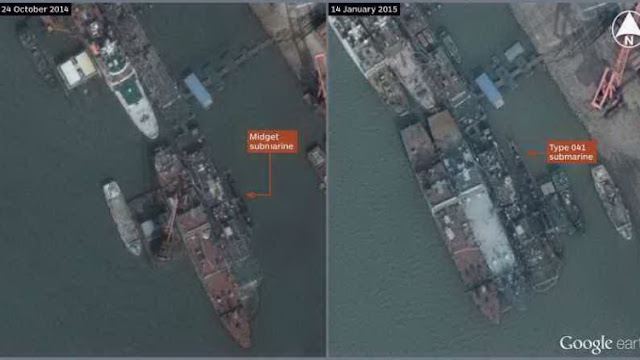There were about 1000 German U-boats built over the course of World War 2.The main German sub was the Type 7C which was about 800 tons and 67 meters (220 feet) long.
Currently the USA has about 55 nuclear submarines that cost about $1-3 billion each. On average the cost of each submarine is about $1.6 to 2 billion. The annual operating cost for any of these subs is approximately $21 million. The typical service life of a nuclear sub is about 30 years. Refueling and modernizing at the half-life point costs about $200 million. Near the end of the service life, another refueling and extensive overhaul for about $410 million will extend the life another 12 years, for a total service life of 42 years. This totals to about $3.6 billion in constant dollars over the lifetime of a Seawolf class sub.
Air independent diesel electric can cost about $100 to 300 million. Operating costs are lower. Automation can reduce the crew required and further reduce costs. Mass production of robot submarines could see unit costs at $50 million.
Roughly $100 million for the Swedish Gotland submarine
Current DARPA is a robotic surface ship but robotic submarines will likely be developed
James Fanell (x- Navy captain and naval expert), prediced China’s Navy would grow to include 99 submarines of all types, four aircraft carriers, 102 destroyers and frigates, 26 corvettes, 73 amphibious ships and 111 missile craft. All told, Fanell predicted, the Chinese Navy of 2030 will comprise 415 ships. This is up from about 300 ships now. This is based upon a projection of the current rate of production for the Chinese Navy. China building about 10 new submarines each year.
If there were an escalation of the submarine arms race that is currently beginning and the shift to low cost Air independent diesel submarines continued, then the 55 expensive US nuclear submarines could eventually be replaced by 1000 to 2000 robotic submarines and AIP diesel submarines. The USA and China could afford to spend $5 to 15 billion per year building up to the 1000 to 2000 low cost and robotic submarine fleet levels over ten years.
‘Picking up the quiet hum of a battery-powered, diesel-electric submarine in busy coastal waters is ‘like trying to identify the sound of a single car engine in the din of a major city,’ says Rear Admiral Frank Drennan, commander of the Naval Mine and Anti-Submarine Warfare Command.
Small but longer endurance submarines
China has a new midget submarine in the 400-500 tonnes size range (about 37 meters long.) It appears similar to the South Korean KS 500A.
DigitalGlobe imagery published on Google Earth showing what appears to be a midget submarine at the Wuchang shipyard in Wuhan, China. A Type 041 conventional submarine berthed at the same site in January is shown for comparison. (IHS/Google, DigitalGlobe)
KS 500A submarine specifications
— displacement — 510 tons;
— length of 37 meters;
— width — 4.5 m;
— maximum depth — 250 meters;
— max speed / economy — 20/7 knots;
— while the autonomous sailing — 3 weeks;
— range of up to 2 thousand miles.
— crew min / max people -5/10
— landing capacity — 14 people.
US Robotic anti-submarine ship
Speaking at a National Defense Association Event in Virginia,DARPA program manager Ellison Urban outlined why the Navy needs sub-hunting boat bots.
DARPA has Robotic submarines in development. The Anti-Submarine Warfare Continuous Trail Unmanned Vessels (ACTUV) will be reportedly able to operate autonomously up to 90 days. The 132-foot autonomous boat will guide other US military vessels to the sub’s location to destroy it.
The ACTUV prototype dubbed “Sea Hunter” will be ready for extensive tests in the fall of 2015.
Anti-submarine plane
An unspecified number of the four-engined Y-8GX6 (Y-8Q) turboprops have now been inducted into the North Sea Fleet, which is responsible for the maritime domain that stretches from the North Korean border to Lianyungang (Jiangsu Province), some three-and-a-half years after the type was first revealed in late 2011.
No further details about the entry-into-service were revealed in the report, which appeared on a Chinese defence blogging site, except that the Y-8GX6 (Y-8Q) may be rolled out to the PLAN’s East and South Sea Fleets at a later date.
Seen when it first emerged in late 2011, the Y-8GX6 (Y-8Q) maritime patrol and anti-submarine warfare aircraft is now understood to have entered service with the PLAN’s North Sea Fleet. Source: FYJS web page
http://nextbigfuture.com/2015/07/a-21st-century-submarines-arms-race.html





